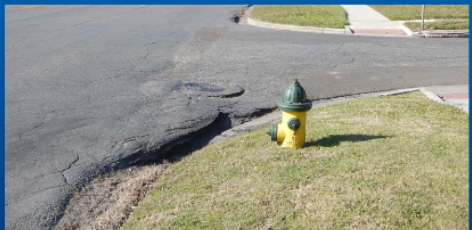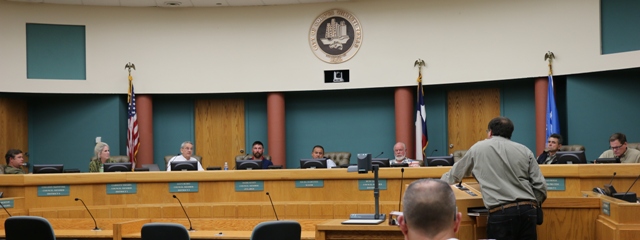[spacer height=”20px”]

[spacer height=”20px”]
Just as Robert Frost expressed in his poem, choosing the right road makes all the difference. For the Corpus Christi driver, it means choosing a road that won’t damage the vehicle or passengers while traveling from Point A to Point B. This city, like so many across the country, is cursed with bad roads, a result of years of both physical and fiscal neglect. Add to that the Coastal Bend environmental extremes, such as long periods of drought followed by extreme flooding, it becomes very important to choose the best road-building materials, contractors, and technology to get the job done right and in a timely manner. But, most citizens don’t really care about how the roads are constructed, what PCI (Pavement Condition Index) garners attention, or who does the job; they just want a smooth, safe ride. That is exactly what the nine-member Ad Hoc Residential Infrastructure Committee concluded after seven months of digging into every possible aspect of street construction, reconstruction, and maintenance.
[spacer height=”20px”]
[spacer height=”20px”]
This dedicated group of volunteers tackled the 150-year-old problem of streets in Corpus Christi and came to the realization that “fixing” the streets could not happen even if the city had all the money necessary. As in many areas of construction, Corpus Christi does not have enough skilled labor to get all the jobs completed. For many years, the craftsmen who are now nearing retirement have voiced this concern to schools, governments, and industry leaders. Though the pendulum seems to be swinging the other direction from “a college education for everyone,” all cities are experiencing an incredible shortage in people who are masters of the various crafts, including the craft of road construction. This results in work done at a much slower pace and often for a much higher price.
[spacer height=”20px”]

[spacer height=”20px”]
To make matters worse, developers who filed for permits before the new street construction standards went into effect in 2013 are oftentimes grandfathered, which means inferior streets are probably still being built. A street that starts off in less than good condition will be a boil on the butt of taxpayers for years to come. Though the SPMP (Street Preventative and Maintenance Program) method for maintaining streets through overlays and sealcoats should ultimately extend the life of the street, the data doesn’t necessarily support that claim. City staff has already implemented some of the strategies and techniques suggested by the committee because they just make good sense.
[spacer height=”20px”]
[spacer height=”20px”]
The lengthy – and sometimes heated – discussions that took place at the meetings between staff and the committee were good for all. The information gathered and discoveries made by the committee that led to the 41-page report presented to the City Council in May of 2016 could easily serve as a “how to” manual on taking care of all streets, including arterials and collectors, for many years to come. The document goes into great detail the way the work is done now, what a Targeted Reclamation Area approach can accomplish, how to prioritize street rebuilding, what to do to finance the mammoth problem, and how to communicate to the citizens what needs to be done and how. The best way to go about the problem is to understand that the street issue will never end. To make the customer happy, it requires that City staff use the creative thinking of the committee and choose the road they paved with blood, sweat, and tears – not tax dollars – to head in the right direction.


